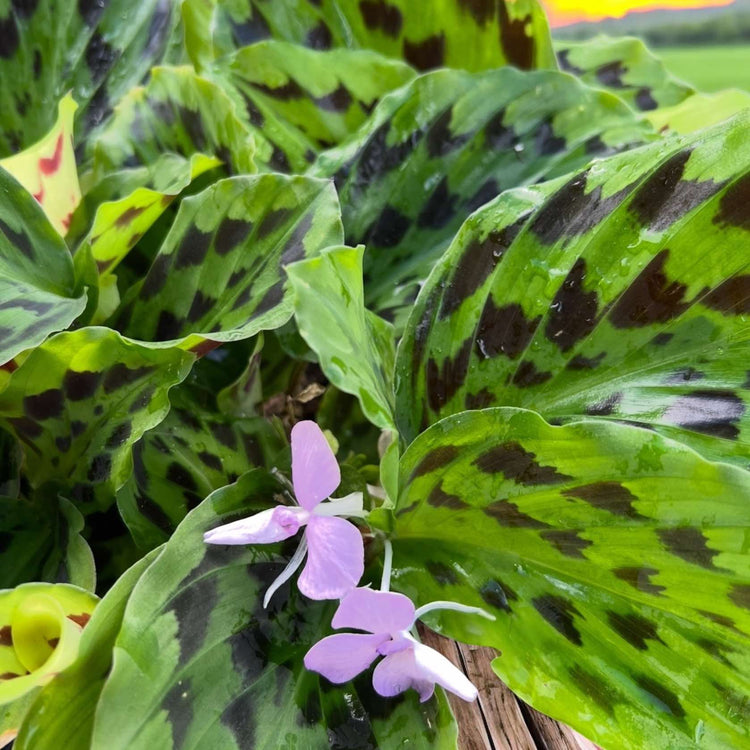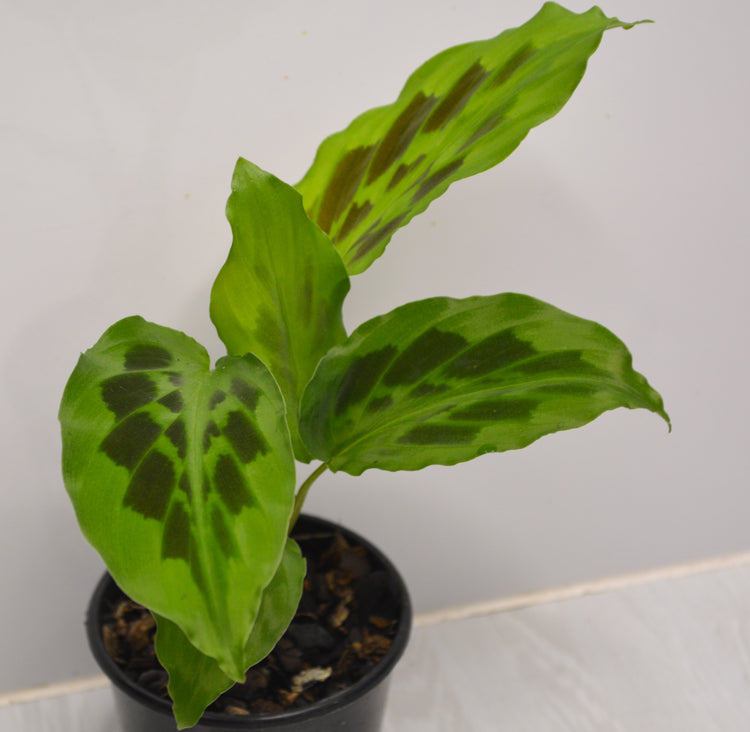Kaempferia elegans 'Peacock' 70mm Pot
- Regular price
-
$25.00 - Regular price
-
- Sale price
-
$25.00
-
Hurry, only 1 item left in stock!
Couldn't load pickup availability
Shipping information


Product Details
Welcome to Plant&Leaf and our range of family grown plants. The first photo serves as a representative display, showcasing the beauty of a mature plant. The second photo provides a sample of a single plant from the current batch available. Please note the Pot size displayed on the heading of each product.
All of our plants are grown outdoors in nature and are exposed to the natural elements. Sometimes this means a leaf could have been chewed here and there or have a blemish or two – but we do our best to send the best plants we can on every order.
Kaempferia, commonly known as the "Peacock Ginger" or "kaempferia ginger," is a genus of flowering plants in the ginger family. It’s known for its attractive foliage and sometimes fragrant flowers. Growing Kaempferia can be quite rewarding if you follow these steps:
1. Choose the Right Location
- Sunlight: Kaempferia plants prefer bright, indirect sunlight. While they can tolerate a little direct sunlight, they thrive best in semi-shade conditions.
- Temperature: These plants prefer warm temperatures, typically between (21–29°C). Avoid placing them in places with cold drafts or sudden temperature changes.
2. Prepare the Soil
- Soil Type: Well-draining, rich soil is essential for Kaempferia. A loamy soil mix or a blend with some organic compost will work well.
- pH Level: Slightly acidic to neutral soil (pH 5.5 to 7) is ideal for healthy growth.
4. Watering
- Consistent Moisture: Keep the soil moist but not waterlogged. Overwatering can cause root rot. Water regularly during the growing season (spring and summer), but reduce watering in the dormant season (Autumn and winter).
- Drainage: Make sure the pot or garden bed has good drainage to prevent standing water.
5. Fertilising
- Balanced Fertiliser: Use a balanced fertiliser once a month during the growing season (spring through summer). Avoid over-fertilising, as this can harm the plant.
- Organic Options: Organic compost or well-rotted manure can also provide nutrients.
6. Maintaining Humidity
- Kaempferia prefers a humid environment, especially during warmer months. If growing indoors, consider placing the plant on a tray with pebbles and water, or use a humidifier to keep the air moisture high.
7. Pruning and Cleaning
- Remove dead or yellowing leaves to keep the plant looking tidy and to prevent disease.
- You can trim back any stems that have finished flowering to encourage new growth.
8. Dormancy
- Kaempferia often goes dormant in the winter months. During this time, the plant may lose its foliage, and you can reduce watering significantly.
- If growing in a pot, you can store the rhizomes in a cool, dry place for the winter and replant them in the spring when the growing season resumes.
9. Pests and Diseases
- Watch for common pests like aphids, mealybugs, or spider mites. If you notice any pests, treat with an insecticidal soap or neem oil.
- Ensure proper drainage and avoid over-watering to reduce the risk of fungal infections or rot.





